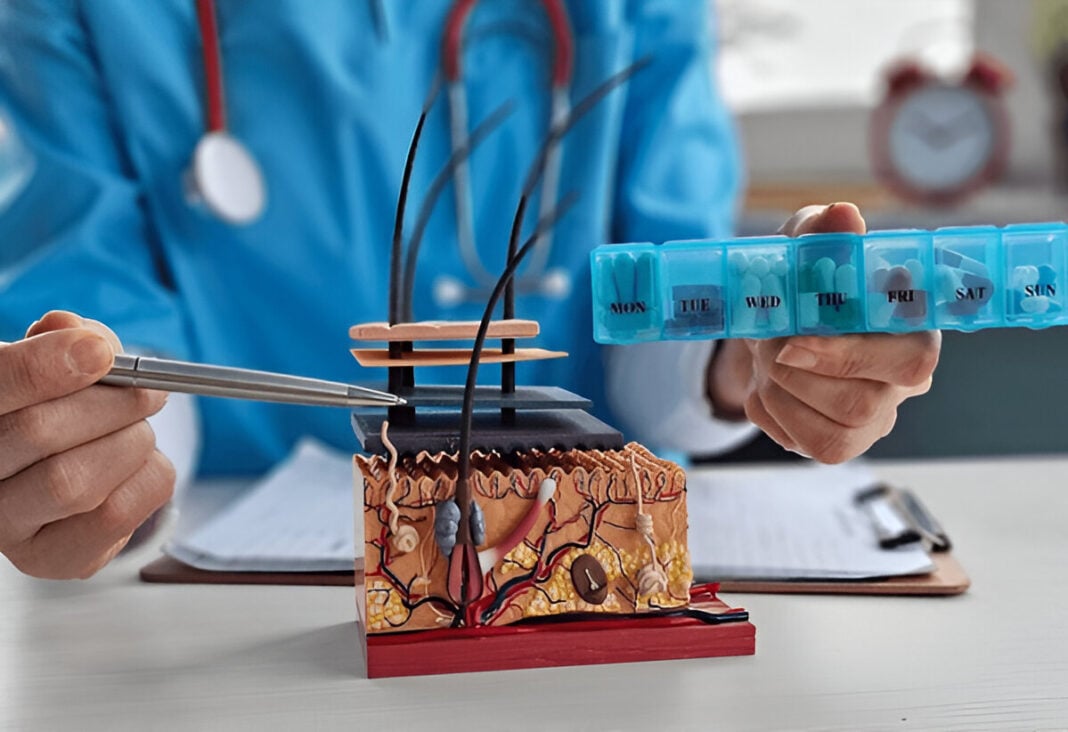Aging is a natural process affecting every component of the human body and skin. Although no means to stop aging exist, biohacking has come along as a set of practices interested in enhancing health and performance, including that of the skin- Thus biohacking for skin aims to slow aging at the cellular level by influencing biological processes with nutrition, lifestyle modifications, supplements, and some of the newest treatments in dermatological application. But can biohacking access aging? Or is it simply another trend in wellness? Let’s delve into the science behind it.
Understanding Cellular Aging and Skin Health
Skin aging comprises intrinsic (natural genetic aging) and extrinsic (environmental) factors. Aging is at the cellular level when oxidative stress, inflammation, and DNA damage come into play, with shortening of protective caps at the ends of our chromosomes-telomeres-as an additional aging hallmark (Lopez-Otin et al., 2013). Together, these processes induce wrinkling, sagging, and decreased elasticity. Biohacking aims to slow down the pace of these changes by optimization of function and damage reduction within the cells.
Biohacking Strategies for Slowing Skin Aging
Optimizing Nutrition for Skin Longevity
- Rich diets in antioxidants, in combination with vitamins and healthy fats, have a great impact on skin aging. It has been found that foods rich in polyphenols, including berries, green tea, and dark chocolate, act as food to fight against oxidative stress (Rinnerthaler et al., 2015).
- Increased collagen intake have shown improvements in hydration and elasticity of the skin and have proven overtime to reduce wrinkles (Proksch et al., 2014).
- An increasingly popular biohacking method, intermittent fasting is said to optimize procedures of cell repair while decreasing inflammation and boosting mitochondria activity, which all result in bringing skin back to its youthful luster (Longo & Mattson, 2014).
Harnessing the Power of Sleep and Circadian Rhythms
- Getting less sleep speeds up aging and diminishes the skin’s repair mechanisms. Biohackers attempt to uphold sleep protocols, cut-back blue light exposure before sleeping, and take supplements like melatonin or magnesium to support sleep (Benedict et al., 2012).
- During the dormant phase, skin repair and collagen production are also modified by the circadian rhythm, making sleep hygiene a prime target for biohacking anti-aging (Oyetakin-White et al., 2015).
Cold Therapy and Red Light Therapy
- Cryotherapy (cold exposure) is thought to decrease inflammation and enhance blood circulation in a way that may slow down the aging process of skin (Wojciak et al., 2013).
- Red light therapy has gained popularity for its ability to stimulate collagen production and repair damaged skin cells. Clinical studies show its effectiveness in reducing fine lines and improving overall skin tone (Avci et al., 2013).
Supplements and Longevity Compounds
- Resveratrol and NAD+ precursors: At cellular levels, these compounds augment energy production and repair functions and thus facilitate healthier skin (Zhu et al., 2017).
- Astaxanthin: Astaxanthin, derived from algae, is a powerful antioxidant that has demonstrated its ability to shield the skin from ultraviolet-induced aging and improve skin elasticity (Davies et al., 2018).
- Probiotics: Gut health is directly linked with skin health and can be promoted by certain strains of probiotics that dampen inflammation and promote barrier function in the skin (Bowe & Logan, 2011).
Stress Reduction and Mindfulness
- Chronic stress causes an increase in cortisol levels which results in accelerated aging and damage to the structure of the skin. Meditation, breathwork and biofeedback techniques are famous biohacks to manage stress and improve well-being in general (Sapolsky, 2004).
- Adaptogenic herbs like ashwagandha and rhodiola are studied for their capacity to restore balance of stress hormones and assist skin health (Panossian and Wikman, 2009).
The Future of Biohacking in Anti-Aging Skincare
Minding the advancement of technology, biohacking is no longer nutrition or lifestyle “hacking.” In fact, new and exciting things such as gene therapy, stem-cell rejuvenation, and AI-driven personalized skin care are becoming readily available to the general public. These dermatologists would, however, stress that best approaches toward delaying skin aging would be healthy lifestyle habits along with scientifically evidence-based interventions (Ganceviciene et al., 2012).
The best way in which one can offer real skin longevity is through biohacking-the science-powered promising approach. Through proper nutrition, sleep, stress alleviation, advanced treatment procedures, and supplements, one can optimize cellular health for possible delay in the advent of visible signs of aging. However, the combination should be with expert guidance, as well as realistic expectations. Perhaps not everlasting youth, but certainly an approach to an old self which can be graceful and healthy.
References
- Avci, P., Gupta, A., Sadasivam, M., Vecchio, D., Pam, Z., Pam, N., & Hamblin, M. R. (2013). Low-level laser (light) therapy (LLLT) in skin: stimulating, healing, restoring. Seminars in Cutaneous Medicine and Surgery, 32(1), 41–52. https://doi.org/10.12788/j.sder.0023
- Benedict, C., Brytting, M., Markström, A., Broman, J. E., & Schiöth, H. B. (2012). Acute sleep deprivation reduces amino acid concentrations in the human brain. Molecular Psychiatry, 17(7), 761-766. https://doi.org/10.1038/mp.2011.152
- Bowe, W., & Logan, A. (2011). Acne vulgaris, probiotics and the gut-brain-skin axis—back to the future? Gut Pathogens, 3(1), 1. https://doi.org/10.1186/1757-4749-3-1
- Davies, S. S., & Guo, L. (2018). Lipid peroxidation and its metabolic consequences. Antioxidants & Redox Signaling, 27(6), 329-332. https://doi.org/10.1089/ars.2017.7396
- Ganceviciene, R., Liakou, A. I., Theodoridis, A., Makrantonaki, E., & Zouboulis, C. C. (2012). Skin anti-aging strategies. Dermato-Endocrinology, 4(3), 308–319. https://doi.org/10.4161/derm.22804
- Lopez-Otin, C., Blasco, M. A., Partridge, L., Serrano, M., & Kroemer, G. (2013). The hallmarks of aging. Cell, 153(6), 1194-1217. https://doi.org/10.1016/j.cell.2013.05.039
- Proksch, E., Schunck, M., Zague, V., Segger, D., Degwert, J., Oesser, S., & Vogt, P. M. (2014). Oral intake of specific bioactive collagen peptides reduces skin wrinkles and increases dermal matrix synthesis. Skin Pharmacology and Physiology, 27(3), 113-119. https://doi.org/10.1159/000355523











